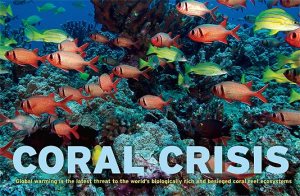
Tailgating, an American tradition as invaluable as hot dog eating contests, and pre-black-Friday campouts. The modern day holy trinity of tailgating is: beer, large consumptions of meat, oh and did I mention beer. More recently however, some innovative sports teams are trying to incorporate a new feature into this pigskin throwing, and gluttonous eating event called the sports greening movement.
In its essence, sports venues who, cough cough hint hint, don’t condone these event, yet fully acknowledge their existence, have tried to make tailgating more eco-friendly. Such teams as the Philadelphia Eagles are beginning to provide recycling bags to patrons, and educating their fans about making clean, healthy, and sustainable choices.
Here are the original tenets of the sports greening movement.
- Add fruit and vegetables to the mix: what’s not to love about having more reasons to grill more kinds of food?
- Choose sustainably-produced meat (including chicken and fish): Look for products marked with the USDA Organic seal. That label ensures the meat is held to a higher standard. And by buying it you’ll be supporting farmers who raise healthier animals.
- Use propane to avoid burning your food: Use propane instead of charcoal because it provides an unmatched level of control and evenness of heat over the grill’s surface–and that means less burnt food and food waste, and more importantly for your health, less undercooked food.
- Know when you’re full enough and store leftovers for later to reduce food waste: The environmental cost of wasted food is staggering: 25 percent of all fresh water and 4 percent of all oil consumed in this country are used to produce food that is never eaten.
- Bring reusable serviceware and containers, and cloth napkins to cut waste: Pack reusable utensils to reduce waste (and cost). Don’t forget to collect recyclables and compost in separate bags.
Some items I’d like to see added to the list which are tangential to but not all related to tailgating include:
1. Providing incentives for those who actively participate in recycling and other sustainable actions with reducing admission to future games.
2. Having green areas that educate on the maintaining of the team’s home field, while also explaining other green initiatives.
3. Have a reuse and recycle program which turn recycled cans into BBQ’s to be rented out at fans’ convenience. This will enable more people to use public transportation and leave their grills at home, while also getting the benefits of the tailgating experience.
4. Having a “sustainability day” or “eco-friendly day” at the ballpark with giveaways such as reusable Nalgene products or other green products.
5. Granting important figures in the green community with unique experiences at the ballpark. i.e. free private tour of the ballpark.
Such small changes will clearly affect the way we think and behave at a sports venue, and will bring us one step closer to a world where we all live green, and be green.
source: http://switchboard.nrdc.org/blogs/ahenly/green_grilling_a_tailgaters_co.html







